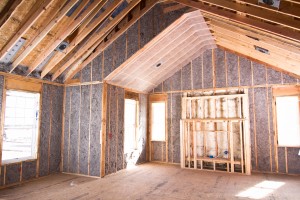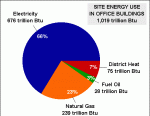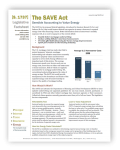While there are many variables that affect cellulose wall-spray applications, using a few simple guidelines can eliminate some of the guess work when trying to achieve optimum performance.
First of all, you need the right equipment adjusted to the proper settings. Your blowing machine should be able to process at least 1,400 pounds of cellulose per hour, and must have the following:
- Air lock with adjustable gate
- Sufficient tines to condition material
- Adjustable blower controls
- 125 ft. of 2 ½ in. blowing hose
Your pump must maintain pressures of 180 to 220 PSI at the nozzle tips. We recommend using a 2-jet nozzle, 2 ½ in. diameter, with an oval or diamond design. Tip sizes will vary based on machine output according to the following chart:
Machine Output (lbs/hr) Tip Size
1,400 2501
1,700 25015
2,000 2502
We recommend an applied wall-spray density of 2.5 lb/ft3. Approximately 1 to 1.2 gallons of water should be used per 28 lb. bag of insulation. The material should be damp, but not wet, with only one or two drops of water capable of being squeezed from a handful of material.
During application, you should maintain a distance of 30 to 36 inches between the spray head and the wall. Begin applying material at the base of the cavity to about eight inches. Then quickly apply a coating along the sides and top of the cavity. Return the bottom, and fill the cavity using a side-to-side motion. Material should extend just beyond the studs and a stud scrubber should be used to remove excess insulation. Typical drying time is 24 to 48 hours. Insulation should not be covered until adequately dry.
FIBER-LITE PLUS and WAL-MAT are recommended for wall-spray applications.
Technical assistance is always available. Just give us a call.

 truction is more susceptible to moisture damage than open attic construction. The construction of a cathedral ceiling creates air spaces in rafter cavities. Filling the cathedral ceiling with FIBER-LITE Cellulose Insulation is a very effective way to block the air movement.
truction is more susceptible to moisture damage than open attic construction. The construction of a cathedral ceiling creates air spaces in rafter cavities. Filling the cathedral ceiling with FIBER-LITE Cellulose Insulation is a very effective way to block the air movement. 

